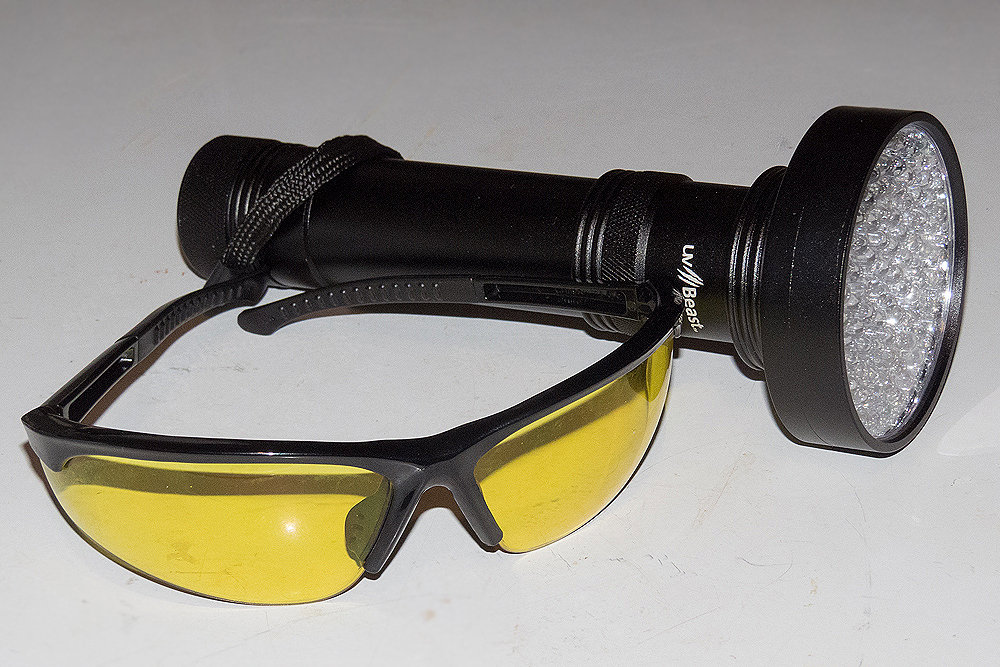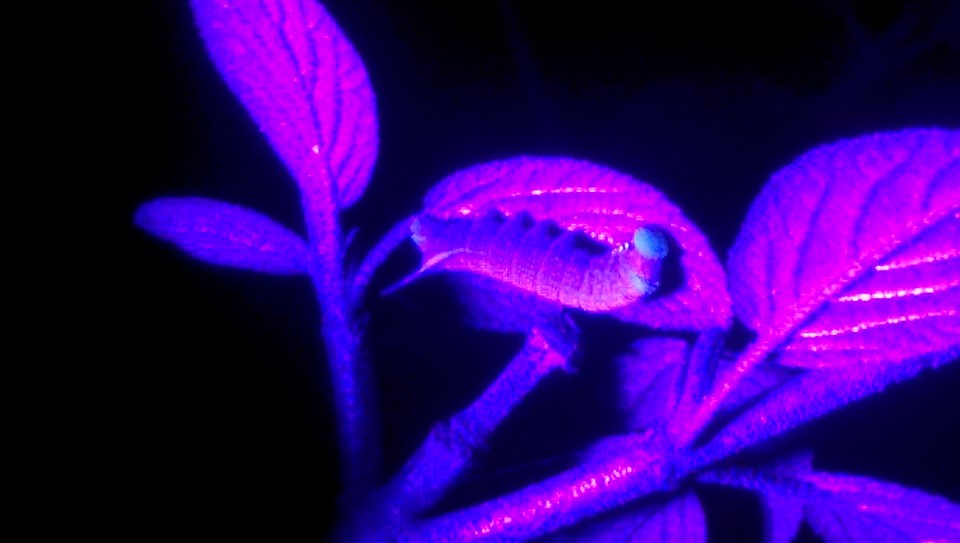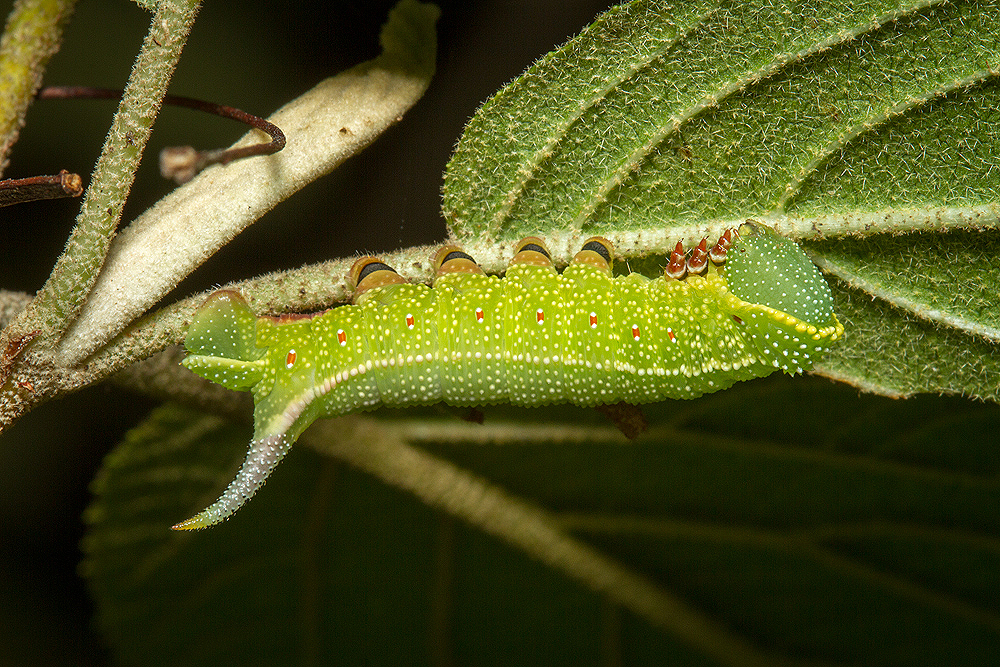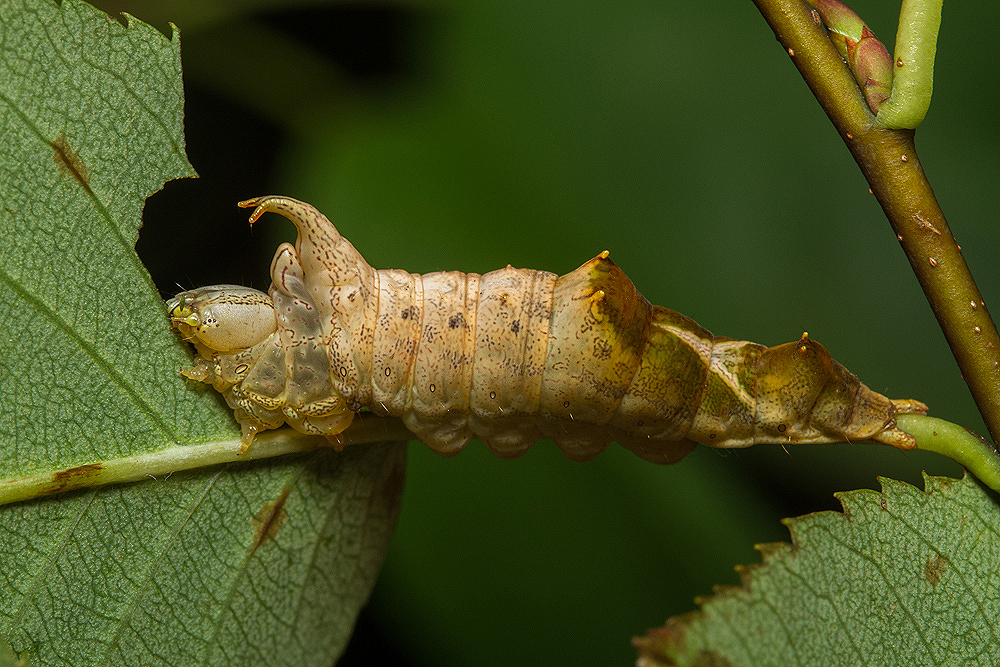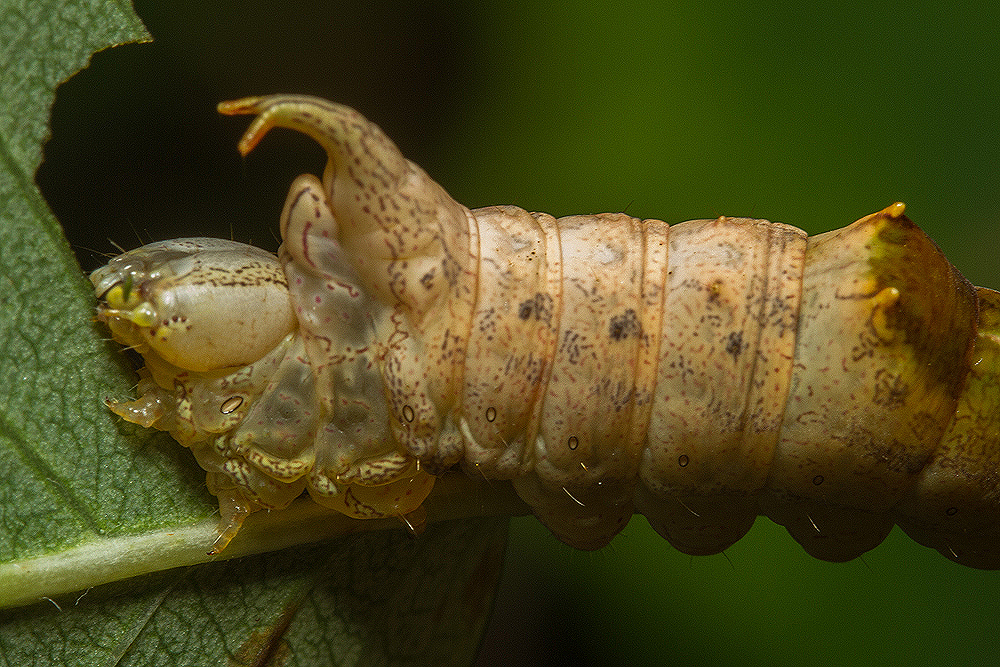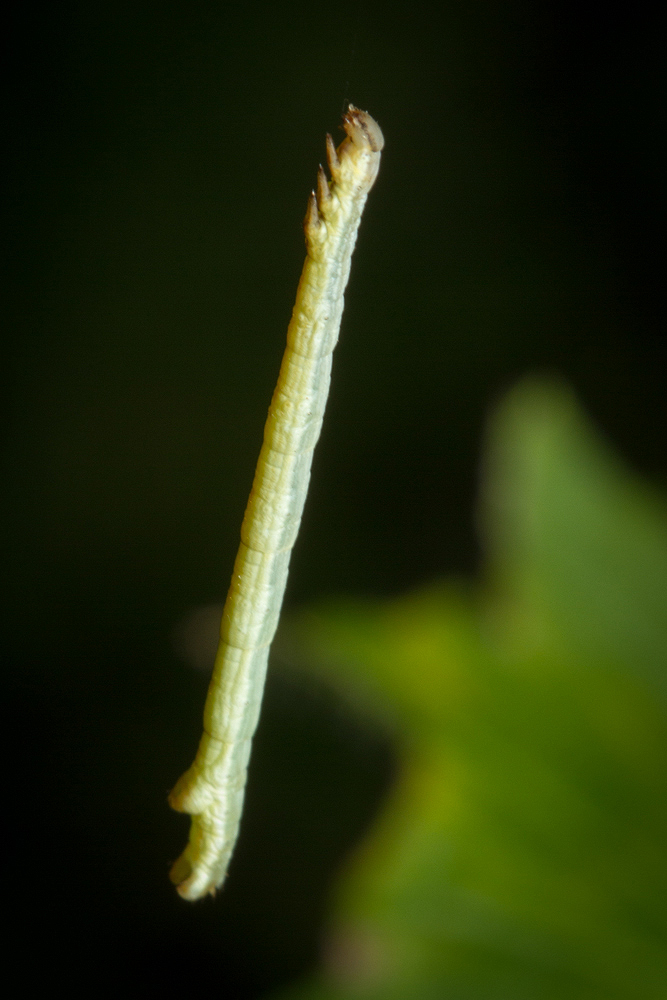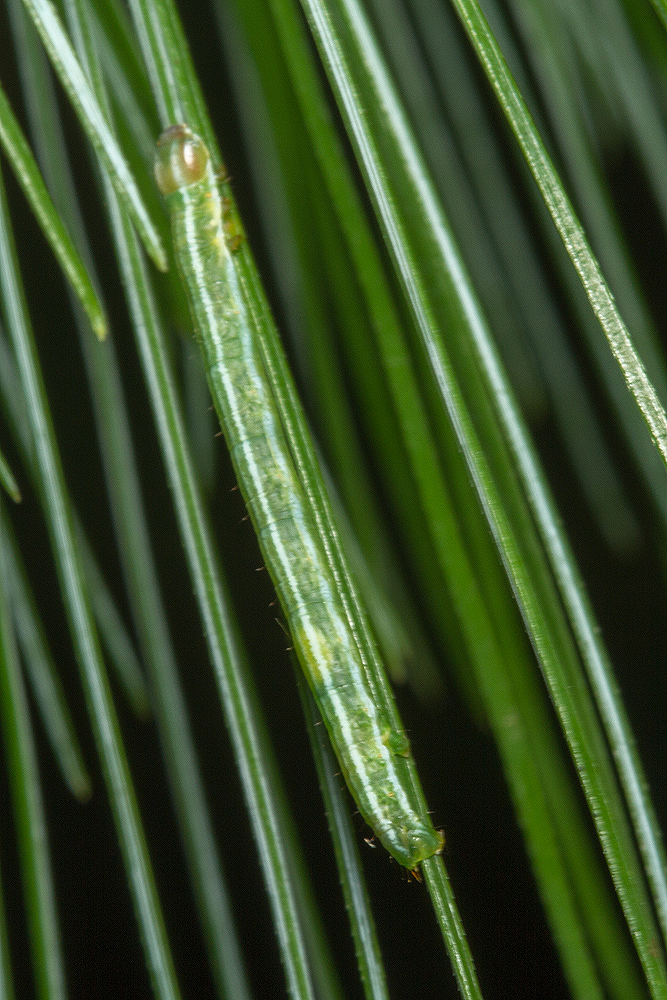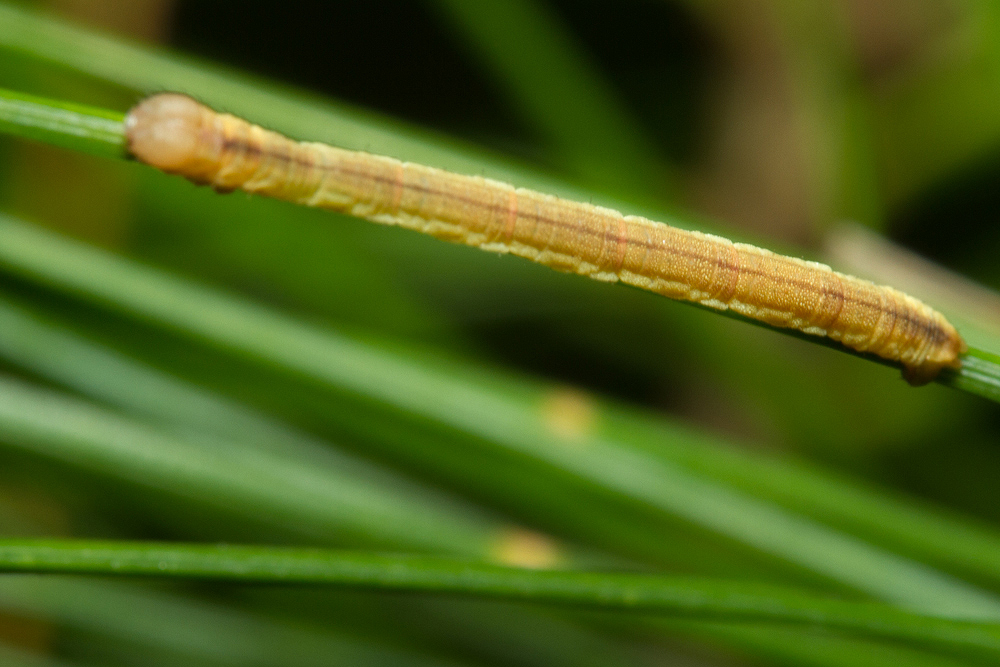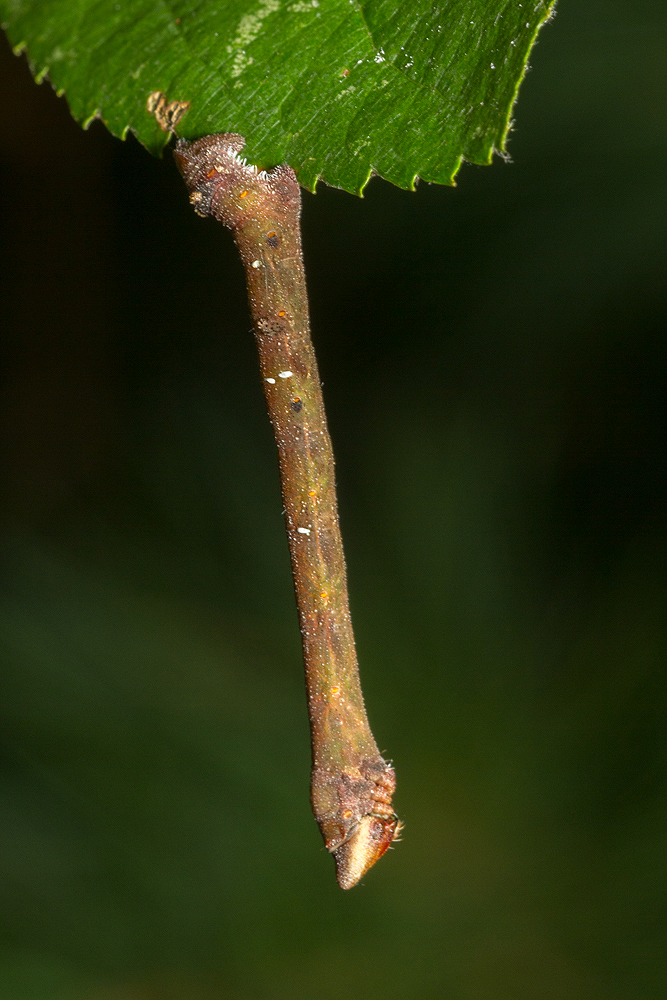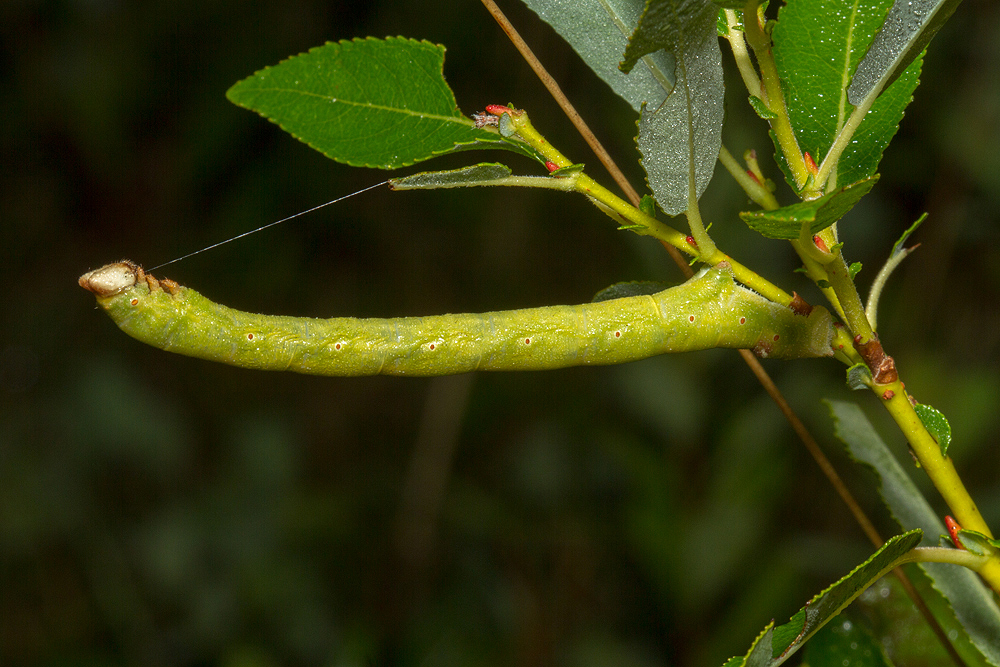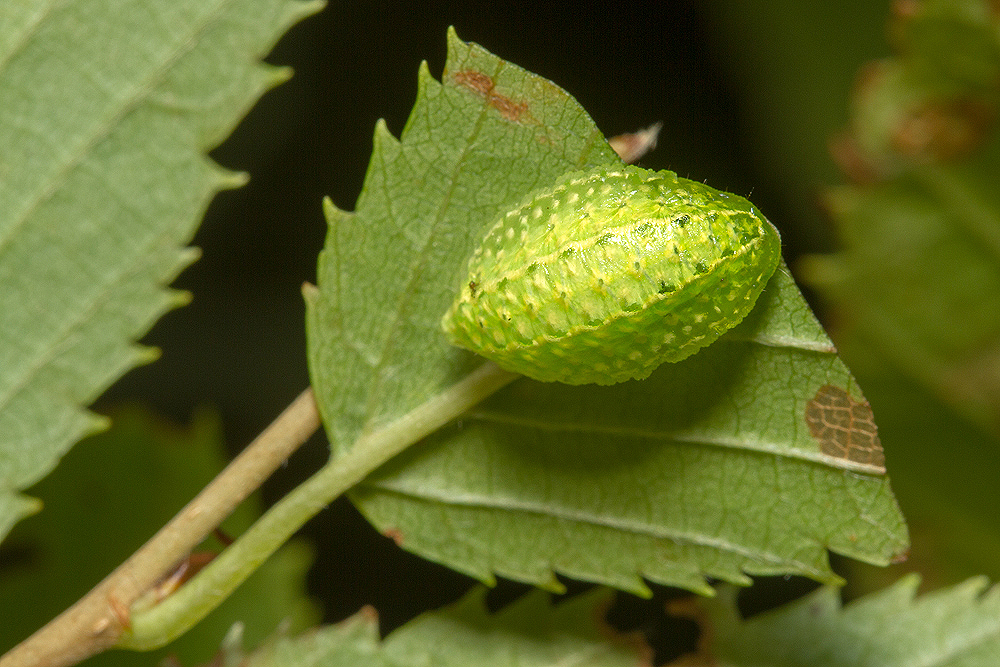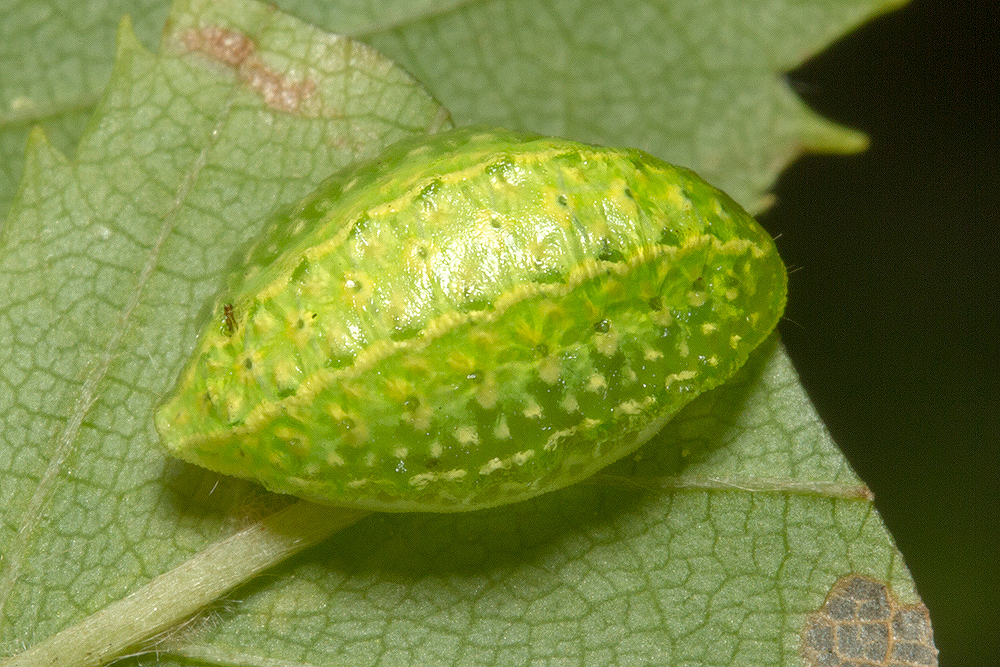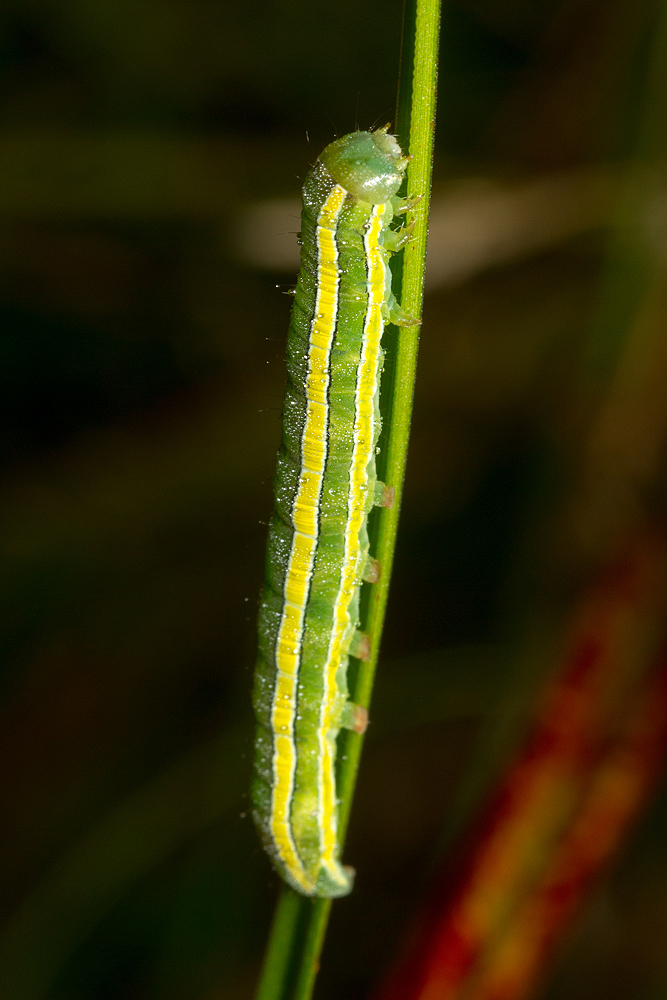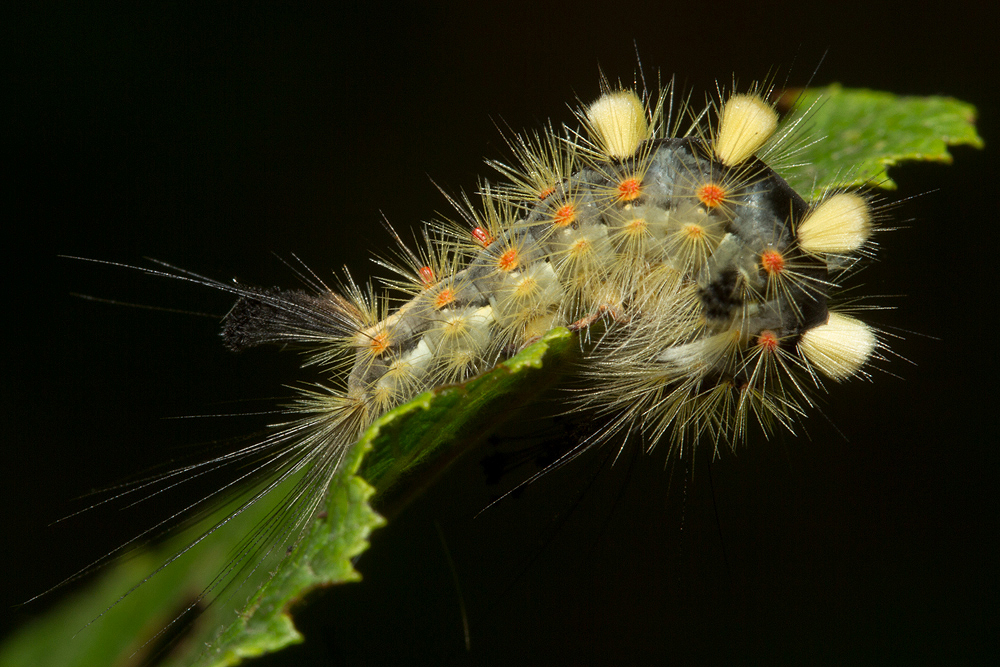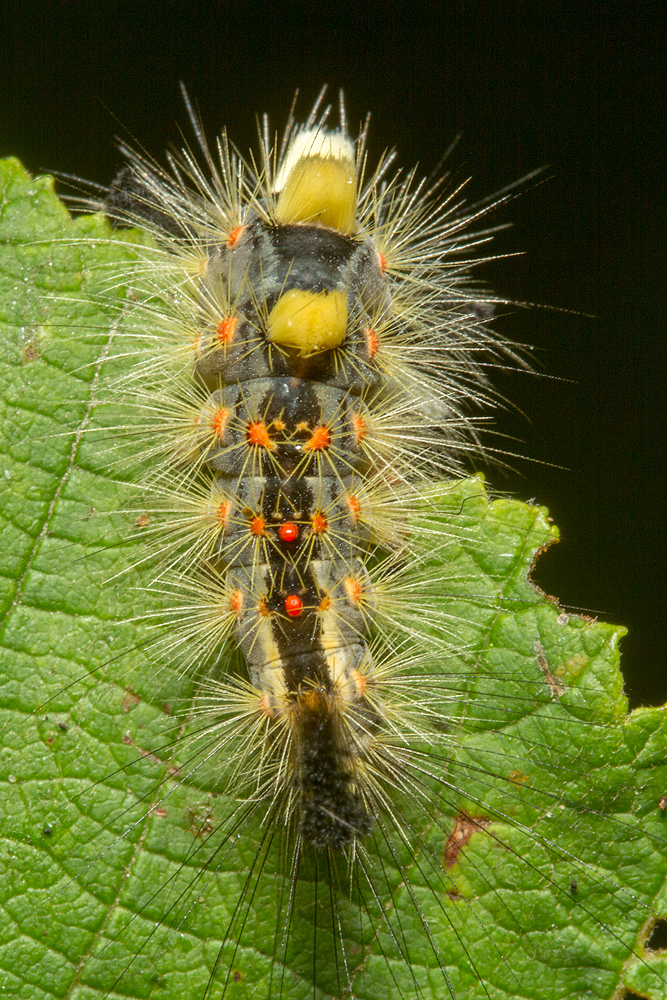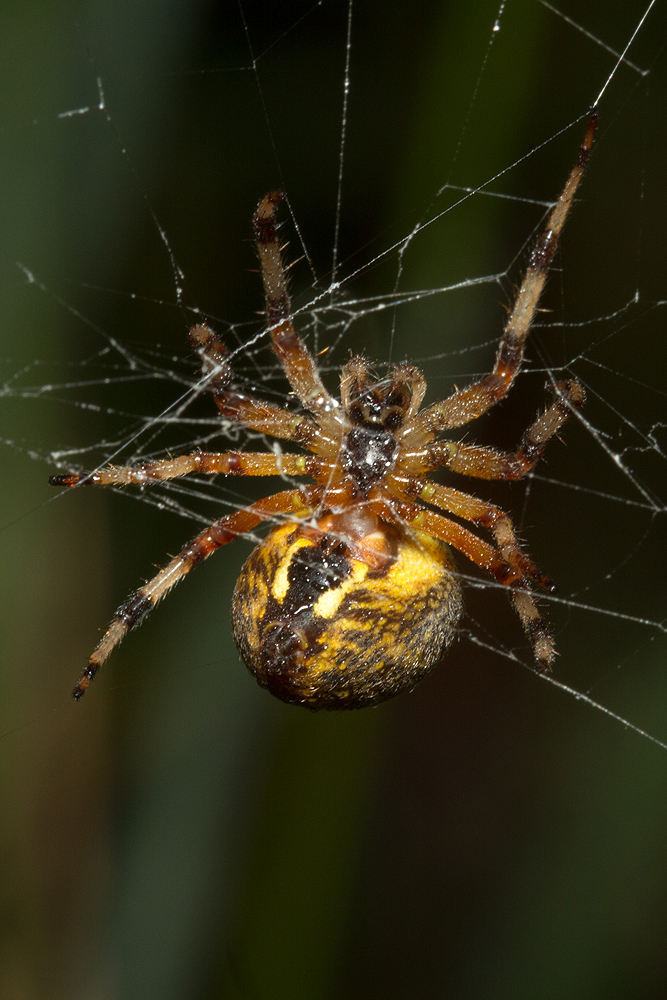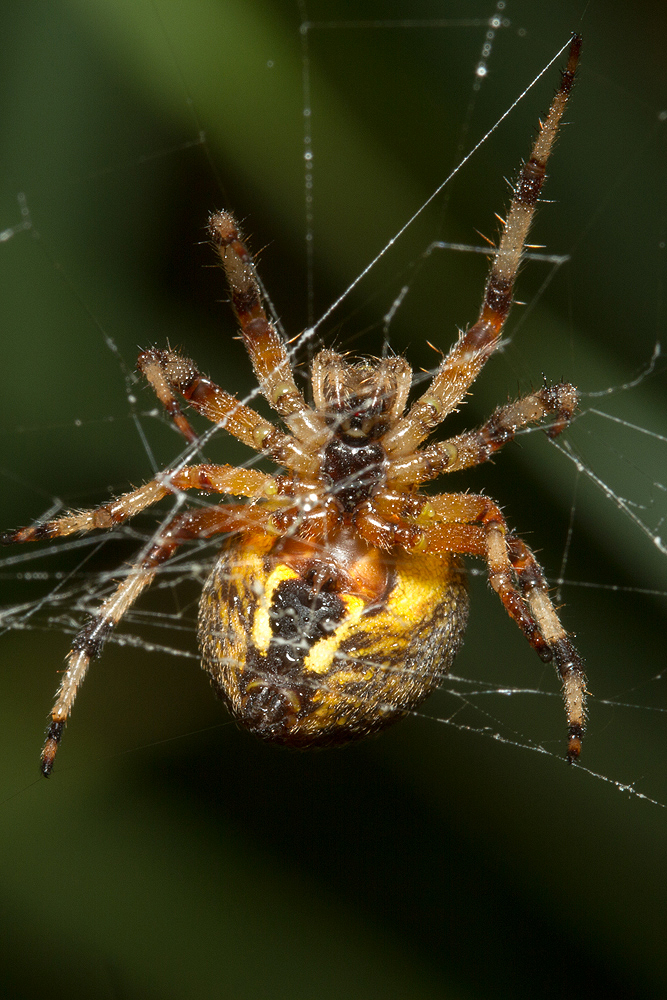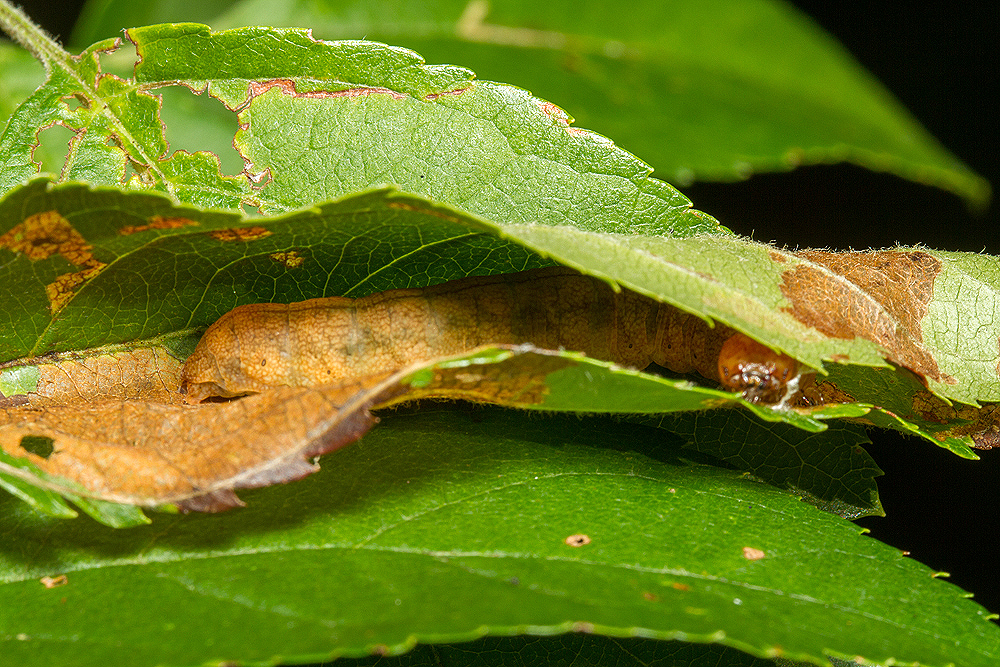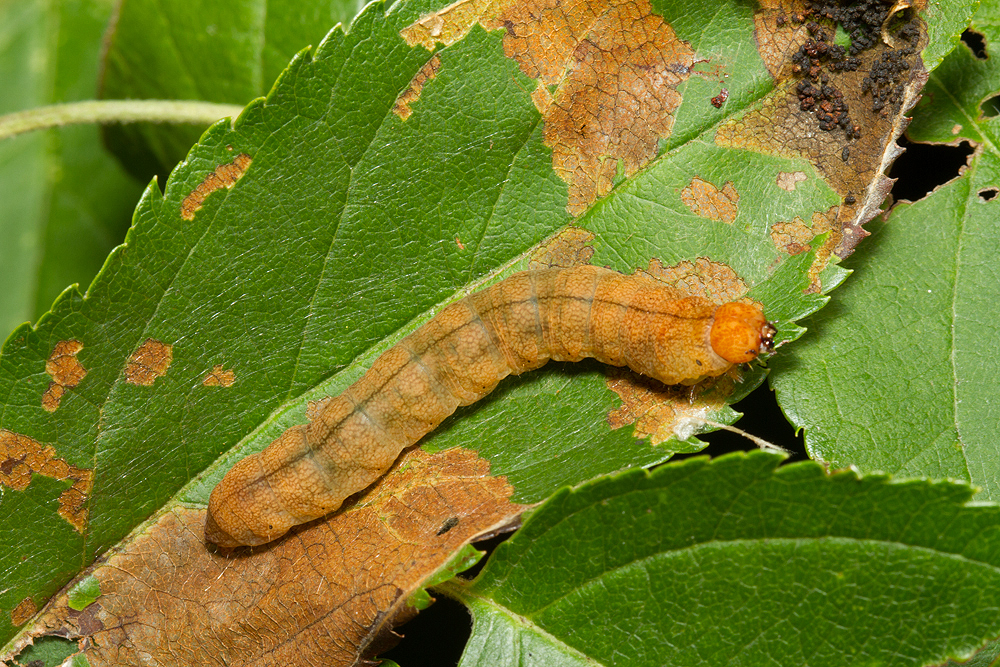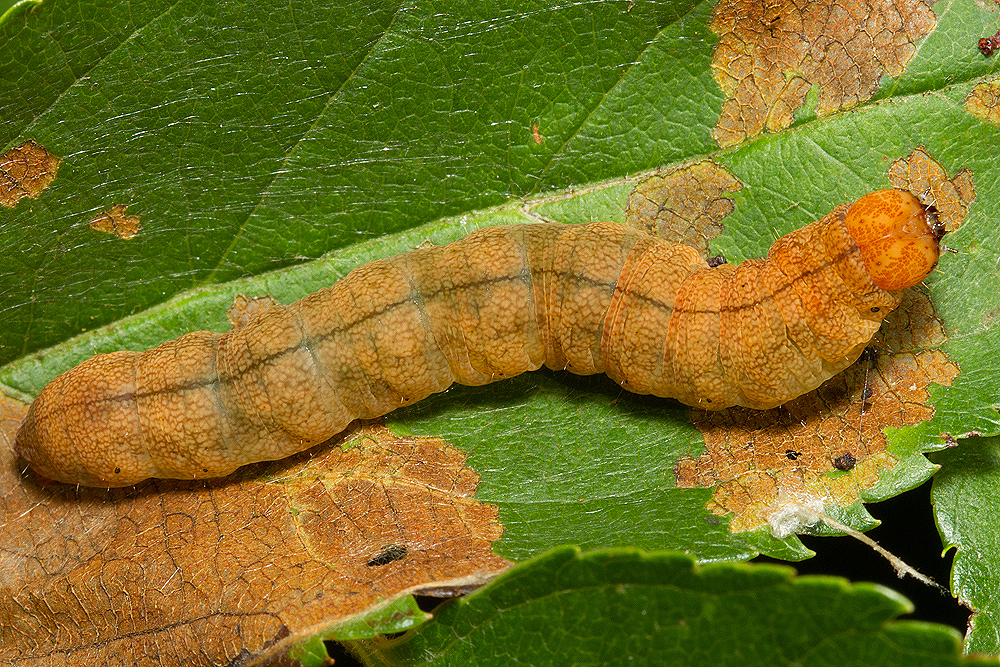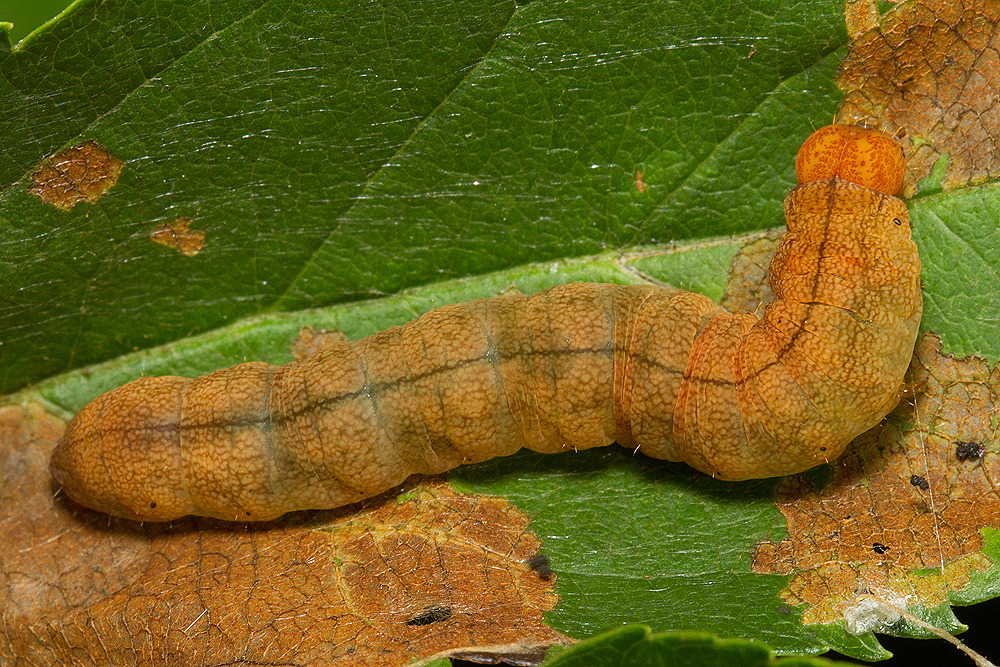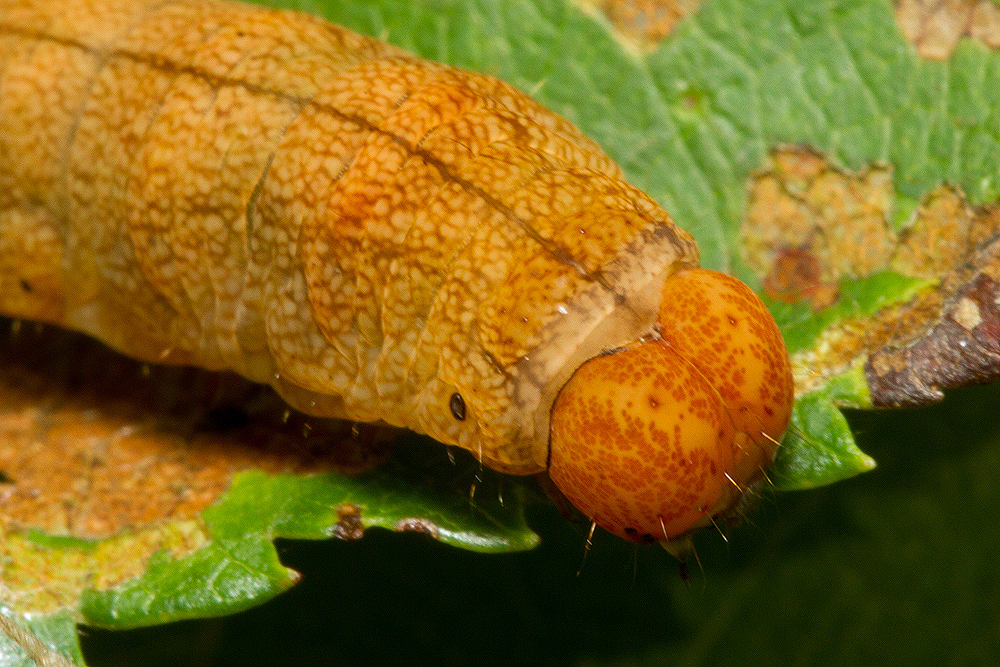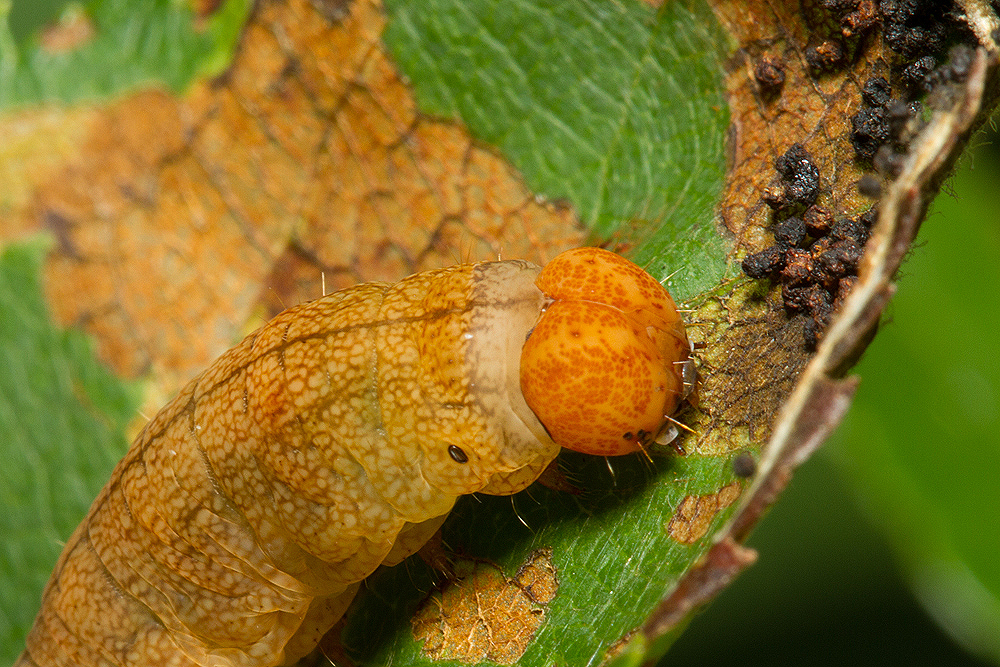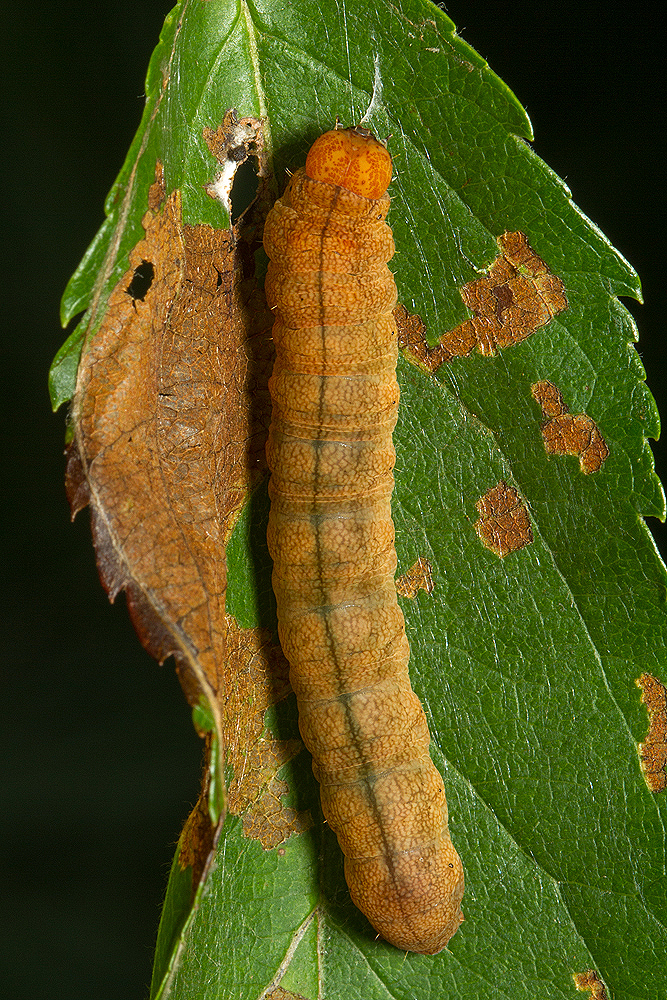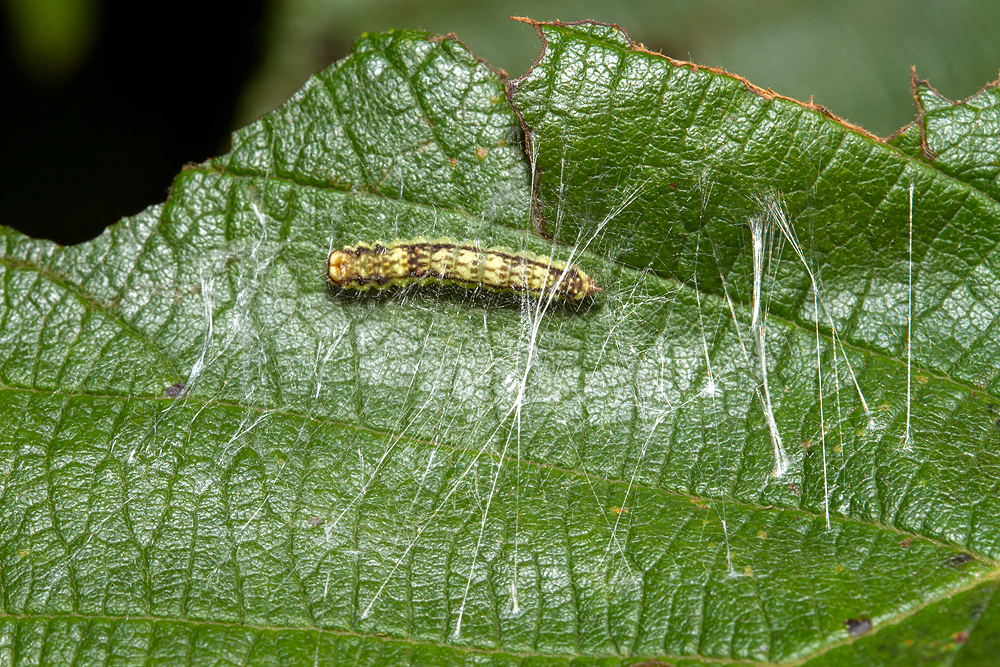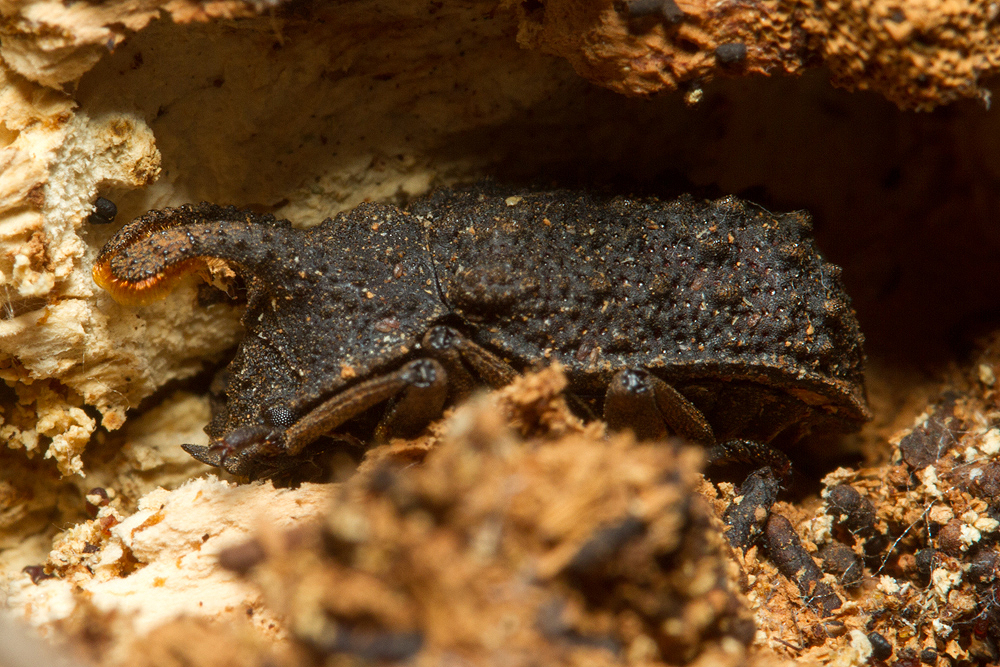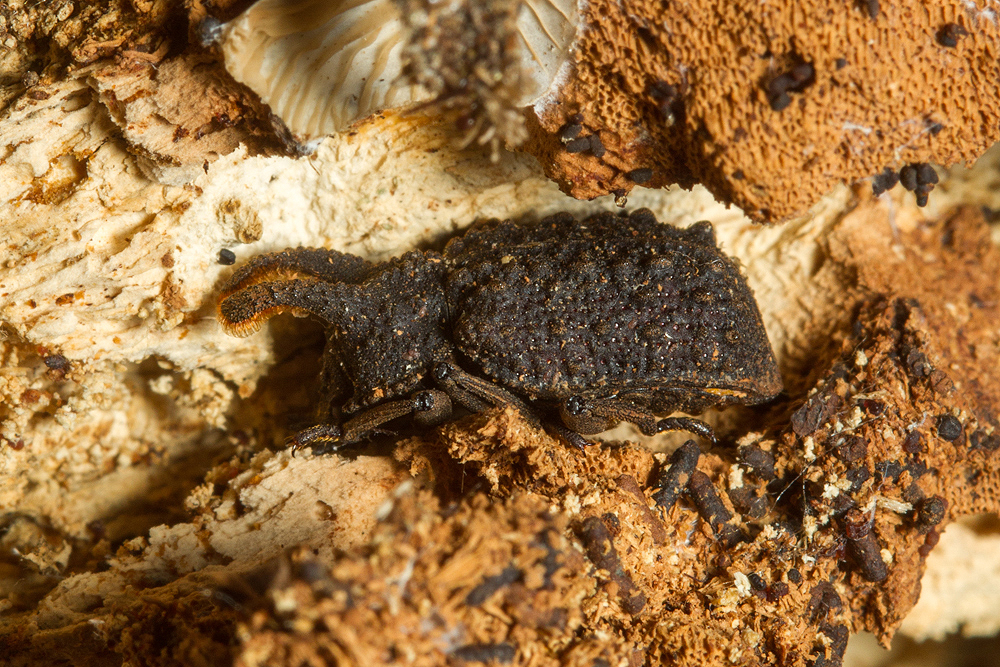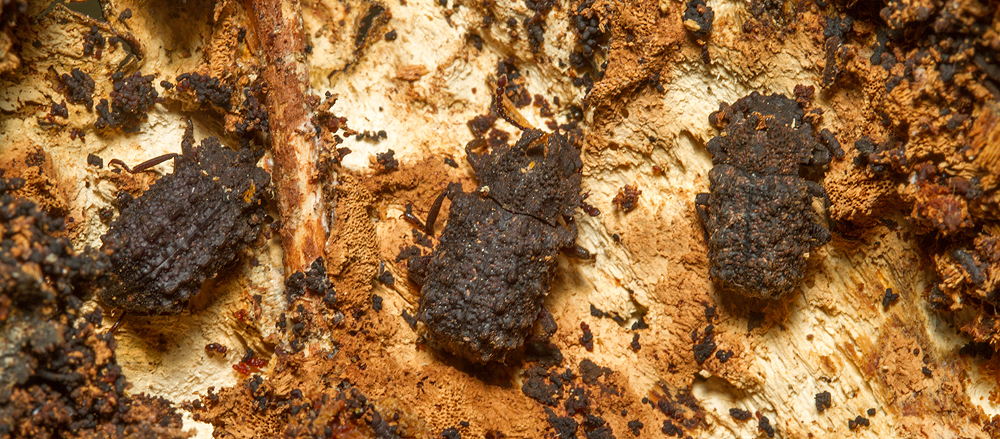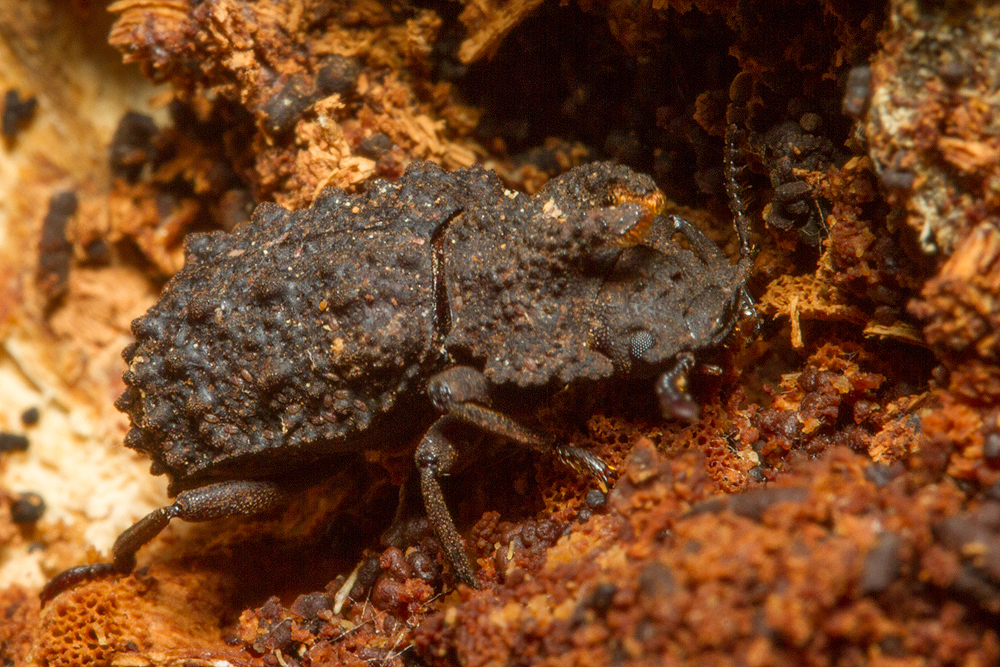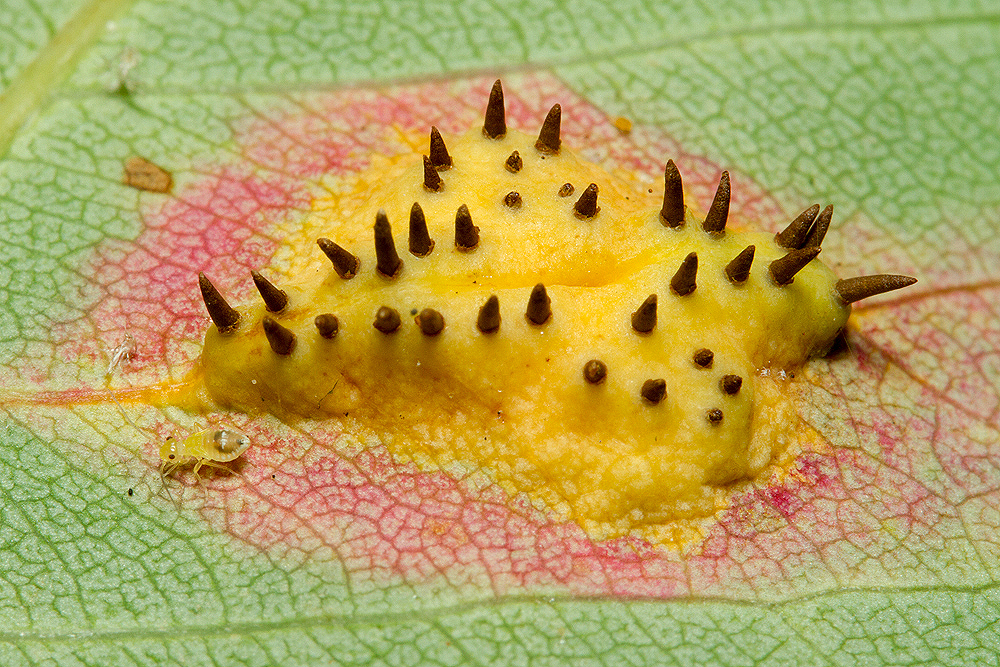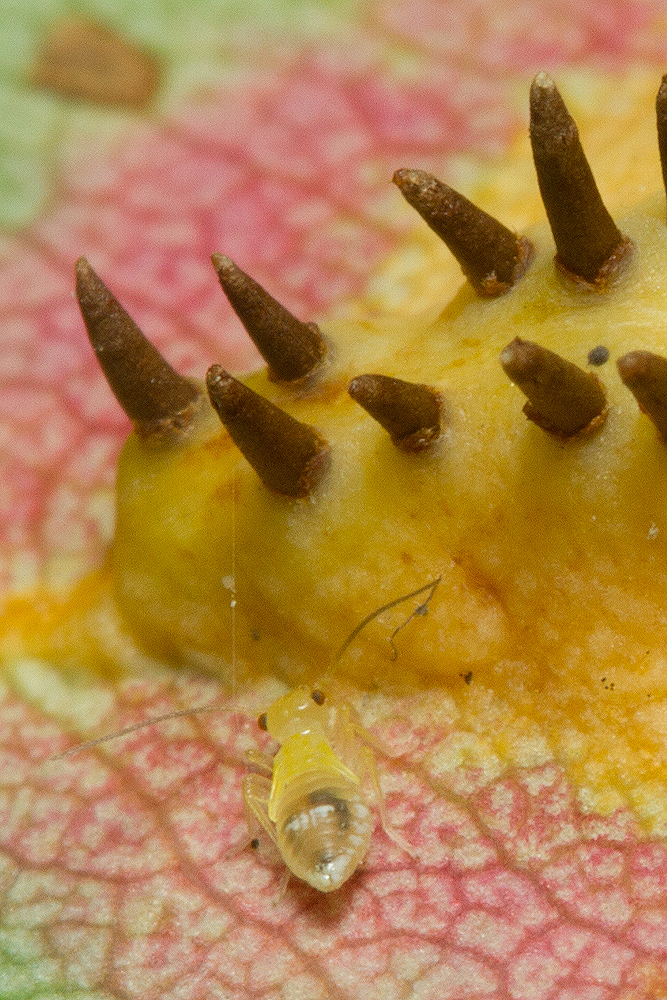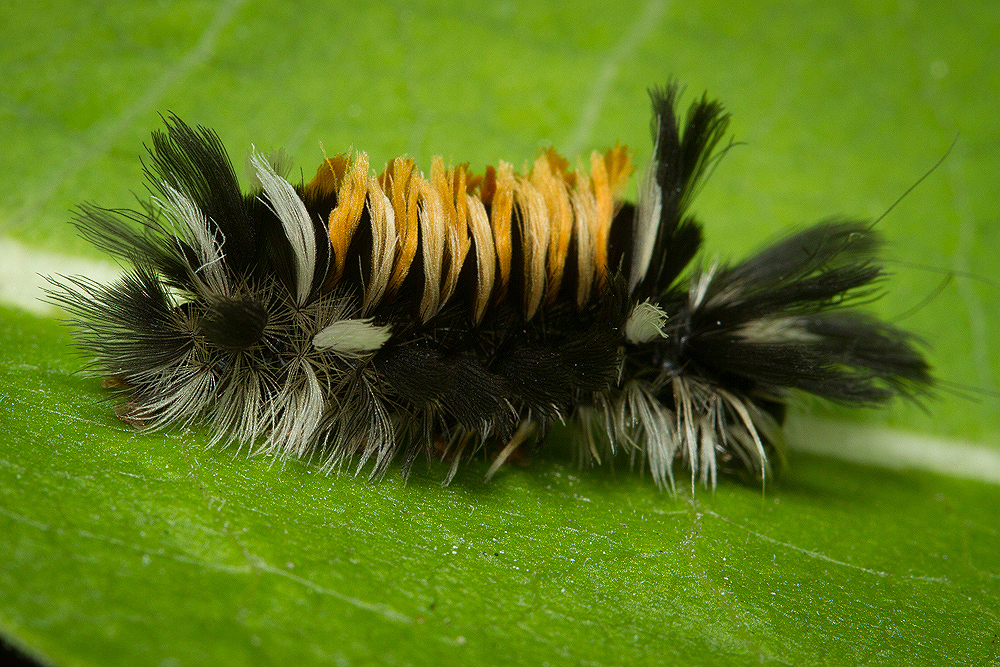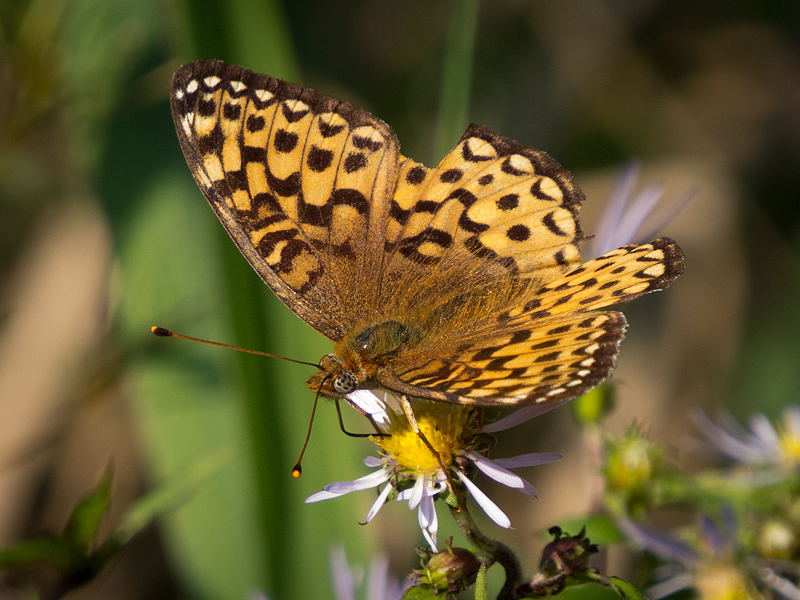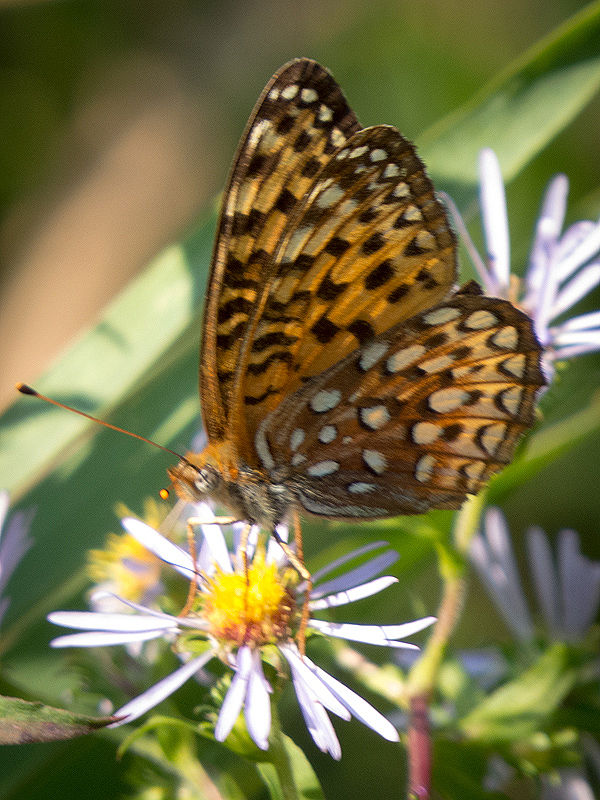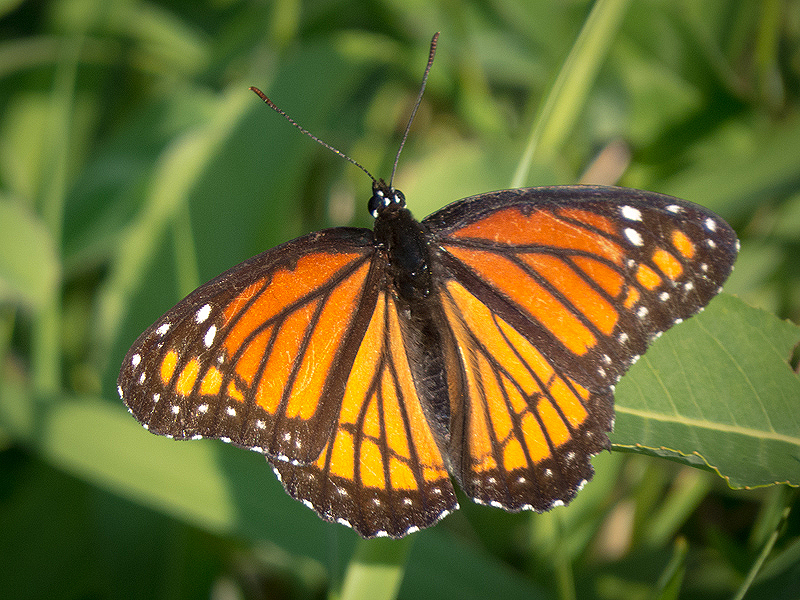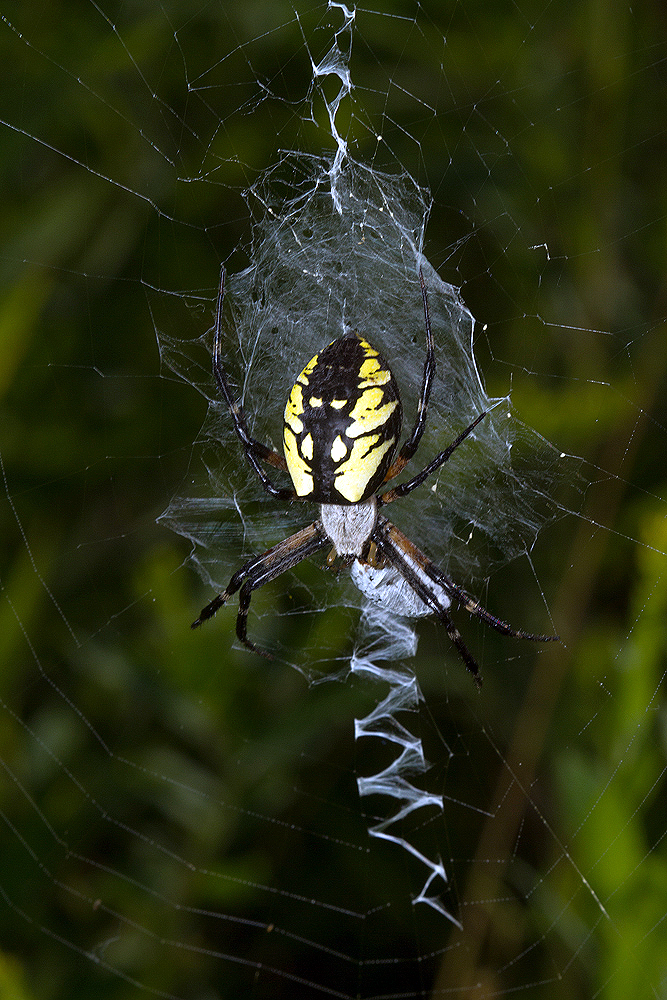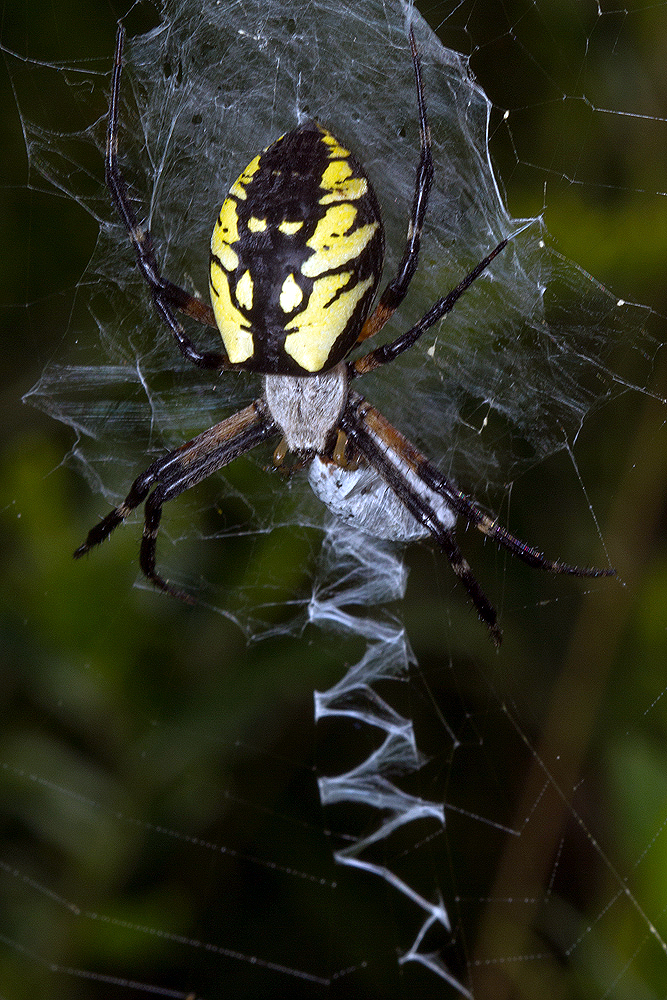New Hampshire bug hunting - September 3-6, 2016 Woodsville, New Hampshire - Stan Malcolm Photos |
mAir Line Home Page |
This first group of photos were taken at night using the combination of a "UV Blast" ultraviolet LED flashlight and yellow-tinted protective glasses to spot caterpillars and some other arthropods. Thanks to Sam Jaffe of The Caterpillar Lab (http://www.thecaterpillarlab.org/) for sharing this awesome visualization technique. The hardware is available on Amazon. |
This photo was taken without the yellow glasses. (I should have tried holding the glasses in front of my lens... but I didn't think of it at the time.) Wearing the glasses makes glowing objects really pop out as the glasses cut the visible light elements (e.g., purple). |
Once spotted (Thank you, Julie), I used my Canon 7D, 100 mm macro lens, and diffused flash to photograph the subjects. Caterpillar is of the Hummingbird Clearwing (Hemaris thysbe). In daylight we were unable to spot the caterpillar anywhere on the shrub, but two nights later it was back where we saw it the first time. (It was not there in the daytime.) |
My absolute favorite, a Red-washed Prominent (Oligocentria semirufescens). At rest, they blend into the leaf margin where they had been eating and look for all the world like dried damage from past caterpillar feeding. |
|
|
|
Lots of inchworms/loopers (Geometridae). This one was dangling by a silk thread from goldenrod. In UV it shone like a beacon. |
UV let me see this well camouflaged looper on pine. |
Another looper on pine. Pardon the focus problems. |
This stick and bud mimic only showed up because of the white specks on its body. Sadly, I suspect they're parasitic wasp eggs. |
Another looper, on some sort of willow. Note the silk thread that helps it retain its posture. In UV light, this caterpillar was very bright; far more so than in this white light photo. |
Yellow-shouldered Slug caterpillar (Lithacodes fasciola). That leaf hasn't been snipped; the caterpillar feeds across the breath of the leaf, gradually reducing it. |
Sadly, that dark speck at the left is the breathing tube (siphon) of a fly parasite which will consume the caterpillar from the inside and eventually kill it. |
This one was on a sedge. Looks like a Black Arches (Melanchra assimilis). |
Rusty Tussock Moth caterpillar (Orgyia antiqua). The four light tufts are incredibly bright in UV, making the caterpillar easy to spot from a distance. |
|
An orb-weaver. The yellow parts and the pale leg segments glowed. |
|
The following insects and spider were found and photographed in daylight.
|
Lots of folded over leaves, held tight with silk bands. Most contain small caterpillars. Not so this one! This guy was two centimeters plus. |
Most likely ID is a Tufted Thyatirid (Pseudothyatira cymatophoroides), but Dave Wagner finds the caterpillars of two Habrosyne species impossible to differentiate (at least at the time his "Caterpillars of Eastern North America" was published in 2005). |
|
Inside its folded leaf, the caterpillar is a skeletonizer. |
|
|
|
ID help? A much smaller caterpillar inside a leaf folded and held fast by silk bands. |
|
I've been watching a colony of Forked Fungus Beetles (Bolitotherus cornutus) for three or four years now. The sporocarps they live on and in are mostly hollowed out husks, but still a number of beetles hang on. |
|
Their behavior is fascinating on many accounts. They're semi-social and likely closely related, though the males joust for control of females and the best spots for feeding on spores. |
|
Best guess is that the strange yellow blob with brown horns is a gall of some sort... or a fungus? Help??? But note the Barklouse nymph (Order Psocoptera) at the lower left. |
Terry Stoleson suggests Cedar Apple Rust (Gymnosporangium juniperi-virginianae) as a possibility. Could be, or if not then something related perhaps. It does affect serviceberry similarly to apple. On cedar the rust is expressed differently. |
Milkweed Tussock caterpillar (Euchaetes egle). |
Atlantis Fritillary (Speyeria atlantis). |
|
Viceroy (Limenitis archippus). |
Garden Spider (Argiope aurantia). The zig-zag of silk is thought to alert birds to the presence of the web, saving it from damage by birds flying through it. |
|
